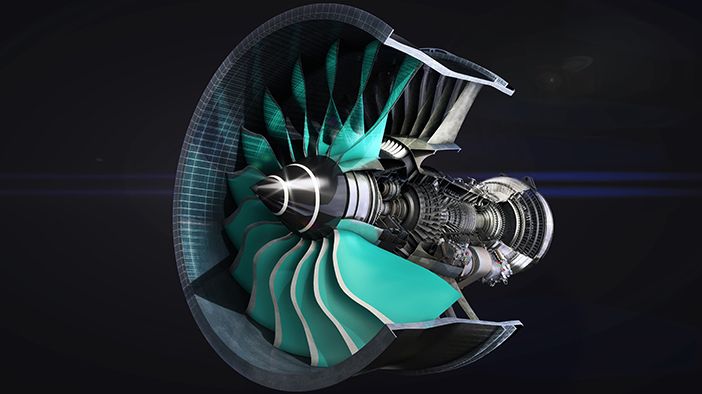Engineers at Rolls-Royce in Derby, UK have successfully tested a key component of its UltraFan jet engine design.
Rolls-Royce is promising the UltraFan engine will achieve a 25% fuel efficiency improvement compared with the first generation of Trent engine.
For the first time, all composite elements of the Advanced Low Pressure system (ALPS), including fan blades, a fan case and annulus fillers, were tested together on a donor engine.
The engine parts are manufactured using automated construction methods by building up around 500 layers of carbon fibre materials. Heat and pressure are then applied, and each blade is finished with a leading titanium edge, which offers protection against foreign objects and bird strikes.
The Advanced Low Pressure System also uses Rolls-Royce’s IntelligentEngine vision. Each blade has a digital twin and during testing data will be collected that will be fed into the digital twins so engineers can predict how each blade will perform in service.
Ash Owen, Rolls-Royce, chief engineer, civil aerospace demonstrator programmes, said, “More than a decade of research and development has brought us to this point and I’m confident that after extreme weather testing in Canada and performance testing in Germany, we can prove ALPS technology even further here in Derby, moving us one step closer to our UltraFan demonstrator.”
Aswell as ALPS, the UltraFan will use several new technologies developed and tested on its Advance3 demonstrator in Derby. These include a new engine core and its ALECSys (Advanced Low Emissions Combustion System).





